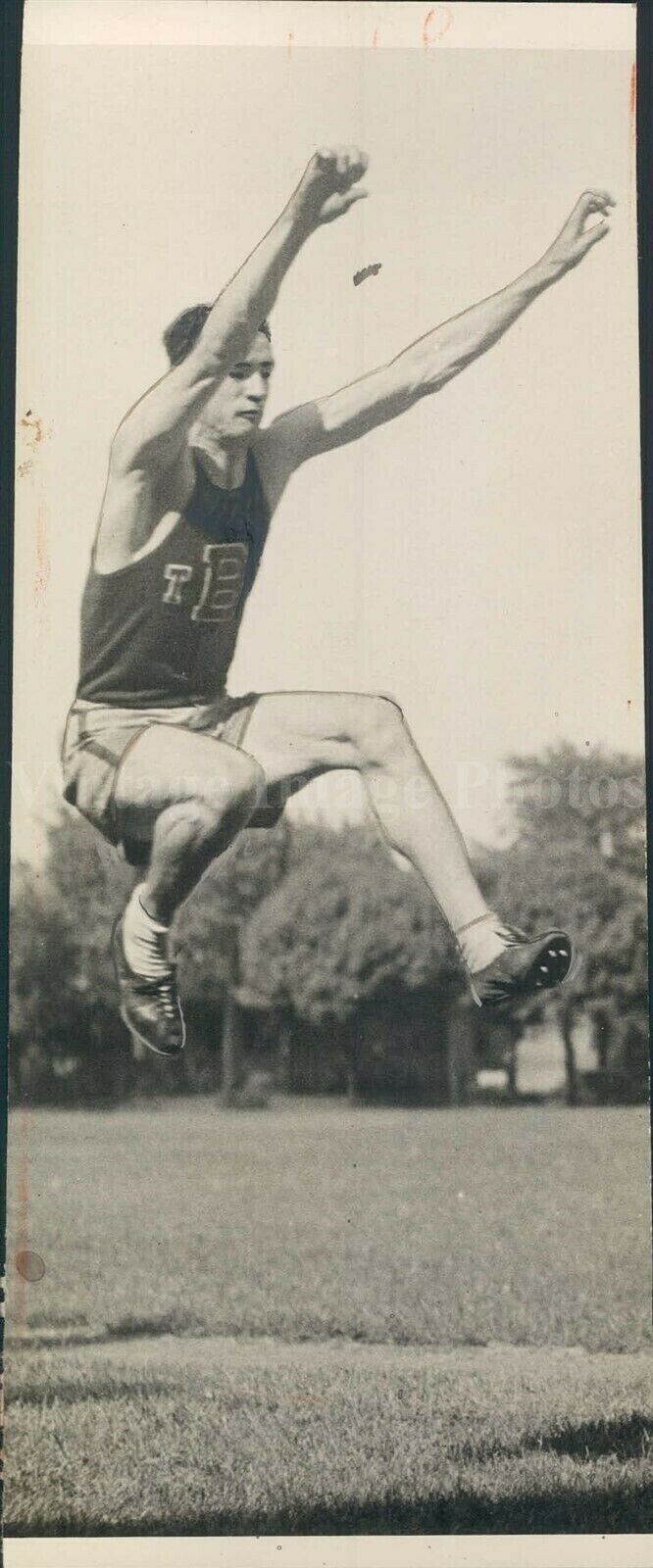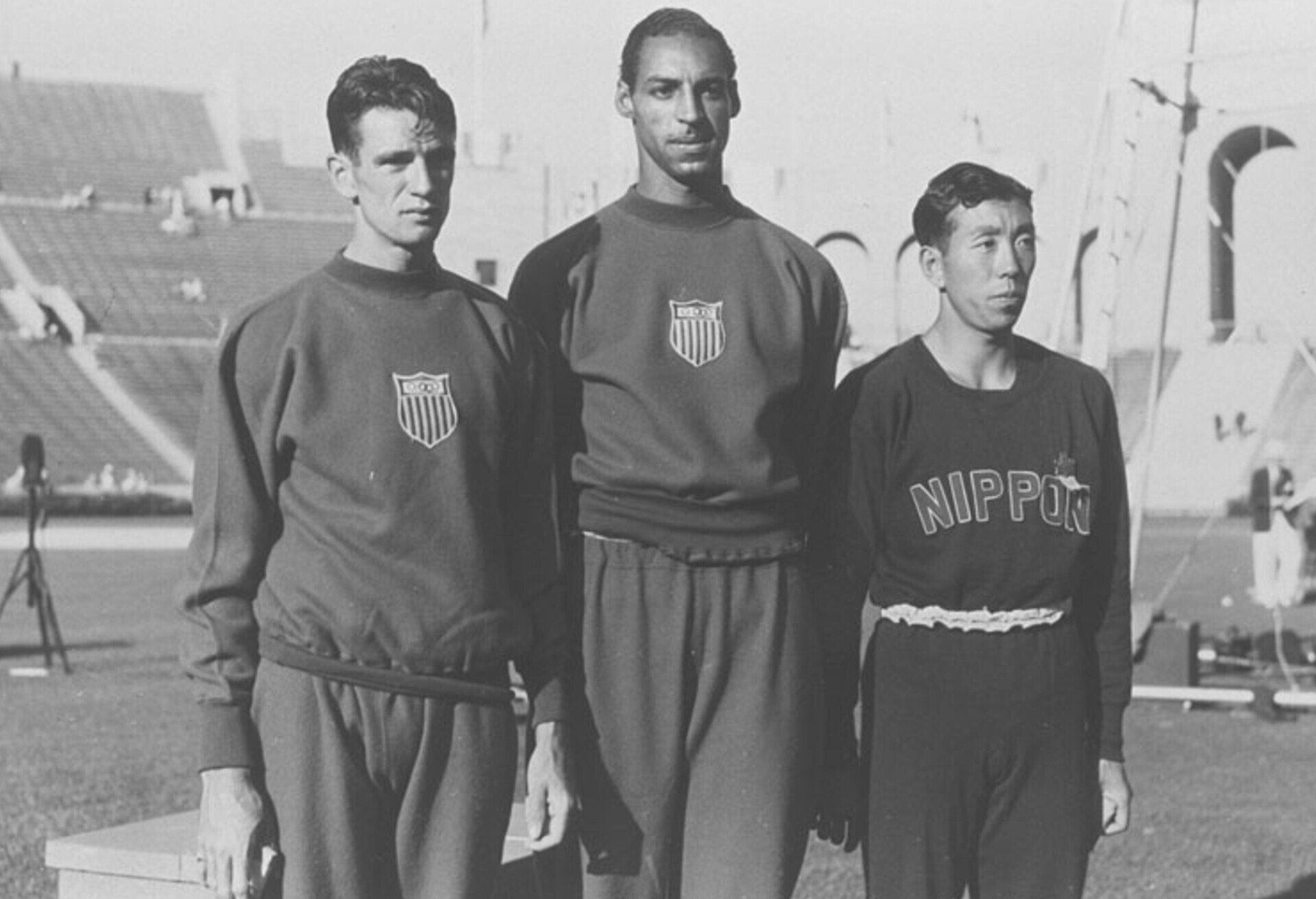Lambert Redd, “The Flying Hawk” (Part 3 - Olympic Series)

Charles Lambert “Pat” Redd was known as “The Flying Hawk” during the two years he attended Quincy College. Entering the school in the fall of 1928, Redd had an immediate impact on both the football and basketball teams. However, it was in track and field where his athleticism put Redd in an elite group. In the spring of 1929, Redd went more than 47 feet in the hop, step, and jump [now known at the triple jump]. On May 26, the Quincy Herald Whig reported that Redd’s effort “established a record unsurpassed by other college teams in Illinois and Missouri this season.” The paper further announced that “Redd, Quincy’s outstanding athlete and all-round star of Quincy College” would compete in the Fourth Annual Quincy Relays. . . .”
In the spring of 1930, which was Redd’s last year at Quincy College, he won the hop, step, and jump at the Drake Relays. Redd went 46 feet, 3 inches. The Herald Whig on April 27 stated that Redd outdistanced his closest competitor by nearly two feet. Redd was not finished. In the broad jump, now known as the long jump, he leaped 22 feet and ¼ inch, which was good for fifth place in the competition.
Redd’s jumps at the Drake Relays elevated him to a higher level. At the Amateur Athletic Union (AAU) track and field meet in Pittsburgh, he went 46 feet, 3 ½ inches in the hop, skip and jump and took the 1930 junior division title.
Busy as he was, Lambert Redd and Charlene Mulinex were quietly married on June 12 in Pittsfield by a Pike County judge. What was intended to be a secret by June 27 had found its way to the pages of the Quincy Herald Whig -----“Charlene Mulinex and Lambert Redd Tell of Marriage-Quincy College Athlete and Popular Girl Were Wed June 12.”
Redd left Quincy for Peoria and Bradley Poly Tech where he continued his athletic career. At Bradley he again excelled at both football and basketball, but it was Redd’s track and field achievements that highlighted his two years in Peoria.
At the 1932 National Collegiate Athletic Association (NCAA) track and field championships, Lambert Redd captured both the broad jump (25 feet, 6 3/8 inches) and the hop, step and jump (48 feet, 3 ½ inches). His next stop was the Olympic trials held at Stanford University in California. Redd’s best effort of 25 feet, 2 1/8 inches in the broad jump earned him the third spot on the U. S. team.
The 1932 Summer Games were held in Los Angeles with the track and field events in the coliseum. Four years before Charles Lambert Redd, age 20, left Grafton, Illinois---a small Mississippi River town north of St. Louis---to enroll at Quincy College. He was now on the biggest athletic stage in the world.
Tuesday, August 2 saw 12 athletes from 9 countries compete in the broad jump. The favorites were the world record holder Chuhei Nambu of Japan, who in 1931 had gone 26 feet, 2 1/64 inches, and the current United States AAU and two-time NCAA champion, Ed Gordon.
Redd was accompanied to Los Angeles by two Bradley coaches, A. J. Robertson, and Cecil Hewitt. Robertson wrote by-lined articles for the Peoria Journal , which are the basis for Kirk Wessler’s August 12, 2016, Peoria Journal Star article, “Pat Redd’s 1932 Olympic silver medal still a golden moment for Bradley.”
In summary Redd’s first jump in the finals went 25 feet, 6 inches, but was ruled a foul. His second jump was 26 feet, 1 inch. Robertson reported that Redd’s jump was subject to a lengthy debate by the officials who in the end declared it a foul.
The debate centered on the clay adjacent to the takeoff board. It had been incorrectly put down; and consequently, it was three-quarters of an inch higher than the board. In the questionable jump, Redd’s front spike barely nicked the edge of the elevated clay surface that abutted the takeoff board. The judges initially ruled a fair jump and measured it at 26 feet, 1 inch. The Japanese judge and coaches vehemently argued that even if the clay had been level with the board, the tick of the spike was a foul no matter where it struck the clay. The judges eventually sided with the Japanese and ruled Redd’s jump a foul.
When the event ended, Lambert Redd’s best jump was 24 feet, 11 3/8 inches, earned him the silver medal. Ed Gordon grabbed the gold with a leap of 25 feet, ¾ of an inch. Nambu took home the bronze.
After the Olympics Lambert Redd coached for a year at Quincy College, but left the Gem City in 1933 to join the Civil Conservation Corps. With the winding down of the CCC, Redd enlisted in the army air corps in 1939 where he rose to the rank of lieutenant colonel. After the Korean War, he left the Air Force, taking a job with Owens Glass in Alton, Illinois. Lambert Redd returned to Quincy in 1973 and eventually lived at the Illinois Veterans Home where he died on February 1, 1986.
Sources
“32 Olympian recalls athletic glories.” Quincy Herald Whig, August 4, 1980.
“Charlene M. Redd.” Quincy Herald Whig, October 1, 1993.
“Charlene Mulinex And Lambert Redd Tell of Marriage.” Quincy Herald Whig, June 27, 1930.
Find A Grave Memorial – Charles Lambert Redd (1908-1986).
“Former Olympian ’Pat’ Redd dies.” Quincy Herald Whig, February 3, 1986.
“Former Quincy College Star Wins in Meet.” Quincy Herald Whig, August 24, 1930.
“Lambert Redd Collected Big Assortment Of Titles On His Way To The Tenth Olympiad.” Quincy Herald Whig, September 11, 1932.
“Next To Gordon And Beats Japanese Entry.” Quincy Herald Whig, August 3, 1932.
“Pat Redd’s 1932 Olympic silver medal still a golden moment for Bradley.” Peoria Journal Star, August 12, 2016.
Quincy College Archives (clippings).
“Quincy College Star Will Race In Quincy Meet.” Quincy Herald Whig . May 26, 1929.
“Quincy College Track Star In Big Relay Meet.” Quincy Herald Whig, April 25, 1930.
“Redd Beats Big Field; Finishes Fifth in Jump.” Quincy Herald Whig, April 27, 1930.
“Redd to Coach Basket Ball at Quincy College.” Quincy Herald Whig, November 10, 1932.






